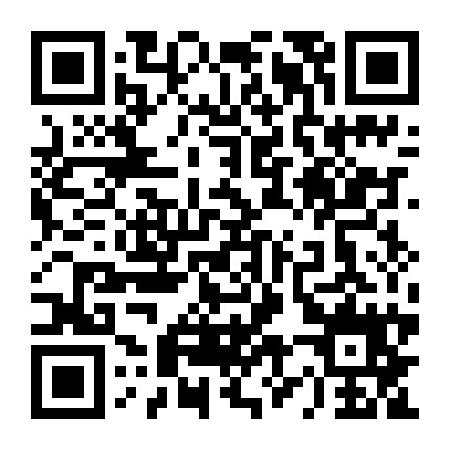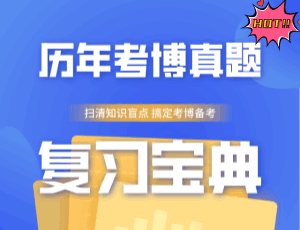医学博士英语统一考试之后,即将迎来各院校的考博英语初试,英语考试的备考,参考历年真题是一个很重要的备考过程,今天新东方在线小编给大家整理了清华大学2011年考博英语真题,帮助大家更好的备考,考博英语考试,一起来看看吧!
A trade group for liquor retailers put out a press release with an alarming headline: “Millions of Kids Buy Internet Alcohol, Landmark Survey Reveals.”
The announcement, from the Wine and Spirits Wholesalers of America received wide media attention. On NBC's Today Show, Lea Thompson said, “According to a new online survey, one in 10 teenagers have an underage friend who has ordered beer, wine or liquor over the internet. More than a third think they can easily do it and nearly half think they won't get caught.” Several newspapers mentioned the study, including USA Today and the Record of New Jersey. The news even made Australia's Gold Coast Bulletin.
Are millions of kids really buying booze online? To arrive at that jarring headline, the group used some questionable logic to pump up results from a survey that was already tilted in favor of finding a large number of online buyer.
For starters, consider the source. The trade group that commissioned the survey has long fought efforts to expand online sales of alcohol; its members are local distributors who compete with online liquor sellers. Some of the news coverage pointed out that conflict of interest, though reports didn't delve more deeply into how the numbers were computed.
The Wine and Spirits Wholesalers of America hired Teenage Research Unlimited, a research company, to design the study. Teenage Research, in turn, hired San Diego polling firm Luth Research to put the questions to 1,001 people between the ages of 14 and 20in an online survey. Luth gets people to participate in its surveys in part by advertising them online and offering small cash awards—typically less than $ 5 for short surveys.
People who agree to participate in online surveys are, by definition, internet users, something that not all teens are. (Also, people who actually take the time to complete such surveys may be more likely to be active, or heavy internet users. ) It's safe to say that kids who use the internet regularly are more likely to shop online than those who don't. Teenage Research Unlimited told me it weighted the survey results to adjust for age, sex, ethnicity and geography of respondents, but had no way to adjust for degree of internet usage.
Regardless, the survey found that, after weighting, just 2.1 points of the 1,001 respondents bought alcohol online—compared, with 56 points who had consumed alcohol. Making the questionable assumption that their sample was representative of all Americans aged 14 to 20 with access to the internet—and not just those with the time and inclination to participate in online surveys—the researchers concluded that 551,000 were buying alcohol online.
But that falls far short of the reported “millions of kids”. To justify that headline, the wholesalers' group focused on another part of the survey that asked respondents if they knew a teen who had purchased alcohol online. Some 12 points said they did. Of course, it's ridiculous to extrapolate from a state like that—one buyer could be known by many people, and it's impossible to measure overlap. Consider a high school of 1,000 students, with 20 who have bought booze on line and 100 who know about the purchases. If 100 of the school's students are surveyed at random, you'd expect to find two who have bought and 10 who know someone who has—but that still represents only two buyers, not 10.(Not to mention the fact that thinking you know someone who has ordered beer online is quite different from ordering a six pack yourself. )
Karen Gravois Elliott, a spokeswoman for the wholesalers' group, told me, “The numbers are real,” but referred questions about methodology to Teenage Research. When I asked her about the potential problems of conducting the survey online, she said the medium was a strength of the survey: “We specifically wanted to look at the teenage online population.”
Nahme Chokeir, a vice president of client service for San Diego-based Luth Research Inc., told me that some of his online panel comes from word of mouth, which wouldn't necessarily skew toward heavy internet users. He added that some clients design surveys to screen respondents by online usage, though Teenage Research didn't.
I asked Michael Wood, a vice president at Teenage Research who worked on the survey, whether one could say, as the liquor trade group did, that millions of teenagers had bought alcohol online. “You can't,” he replied, adding, “This is their press release.”
41.Which of the following is the message that this passage is trying to convey?
A.The severe social consequences of kids buying alcohol online.
B.The hidden drawback of the American educational system.
C.The influence of wide coverage of news media.
D.The problems in statistic methodology in social survey.
42.According to the author, what is wrong with the report about kids buying alcohol?
A.It is unethical to offer cash awards to subjects of survey.
B.The numbers in this report were falsified.
C. The samples and statistic methods were not used logically.
D.The study designers and survey conductors were bribed.
43.Which of the following words is closest in meaning to the word “extrapolate” in paragraph 8?
A.Conduct. B. Infer. C.Deduct. D.Whittle.
44.By saying “To justify that headline, the wholesalers' group focused on another part of the survey that asked respondents if they knew a teen who had purchased alcohol online”, the author implies that ______.
A.it is absurd to conduct a survey among teenagers
B.the ways the wholesalers' group conducted surveys are statistically questionable
C.this kinds of survey is preliminary, therefore undependable
D.teenagers might not be honest since buying alcohol online is an indecent behavior
45.Which of the following is more likely to be the source for problems in this survey?
A.This survey is tilted in favor of local alcohol distributors, who have a conflict of interest with online sellers.
B.The data collection and analysis are not scientific and logical.
C.Subjects are not sampled in a right way and can not represent the whole American teenage population.
D.The survey results are affected by gifts to subjects, which can be misleading.
考博必备!历年真题及答案
考博精品好课,就选新东方!

 资料下载
资料下载
【必看】考博英语词汇10000例精解
发布时间:2020-09-02关注新东方在线服务号
回复【10000】免费获取
医学考博英语作文核心基础词汇整理
发布时间:2020-04-15关注新东方在线服务号
回复【医学考博】获取
医学考博英语阅读理解练习资料
发布时间:2020-04-15关注新东方在线服务号
回复【医学考博】获取
法学考博英语高频词汇word版
发布时间:2020-04-15关注新东方在线服务号
回复【医学考博】获取
医学博士英语统考真题及解析
发布时间:2019-12-26关注新东方在线服务号
回复【考博真题】获取
全国医学博士外语统一考试真题
发布时间:2019-12-26关注新东方在线服务号
回复【考博真题】获取
中科院考博英语复习备考实战经验分享
发布时间:2019-12-26关注新东方在线服务号
回复【考博经验】获取
中科院考博英语真题练习资料
发布时间:2019-12-26关注新东方在线服务号
回复【考博真题】获取

关注新东方在线服务号
关注新东方在线服务号,
免费获取考博必看干货资料

 推荐阅读
推荐阅读
沈阳工业大学2022年博士研究生招生考试英语真题B卷
来源 : 沈阳工业大学 2022-12-26 16:19:18 关键字 : 沈阳工业大学2022博士英语真题
沈阳工业大学2022年博士研究生招生考试英语真题A卷
来源 : 沈阳工业大学 2022-12-26 16:18:19 关键字 : 沈阳工业大学2022博士英语真题
沈阳工业大学2021年博士研究生招生考试英语真题B卷
来源 : 沈阳工业大学 2022-12-26 16:09:06 关键字 : 沈阳工业大学2021博士英语真题
沈阳工业大学2021年博士研究生招生考试英语真题试卷A卷
来源 : 沈阳工业大学 2022-12-26 16:07:31 关键字 : 沈阳工业大学2021博士英语真题
沈阳工业大学2020年博士研究生招生考试英语真题试卷
来源 : 沈阳工业大学 2022-12-26 16:04:42 关键字 : 沈阳工业大学2020年博士英语真题


 考博好课推荐
考博好课推荐
基础薄弱,备考迷茫,送纸质资料
价格 : ¥2280元
资深教师,教学简明,直接有效!
价格 : 0元
 资料下载
资料下载
关注新东方在线服务号
回复【10000】免费获取
关注新东方在线服务号
回复【医学考博】获取
关注新东方在线服务号
回复【医学考博】获取
关注新东方在线服务号
回复【医学考博】获取
关注新东方在线服务号
回复【考博真题】获取
关注新东方在线服务号
回复【考博真题】获取
关注新东方在线服务号
回复【考博经验】获取
关注新东方在线服务号
回复【考博真题】获取

 阅读排行榜
阅读排行榜
 相关内容
相关内容